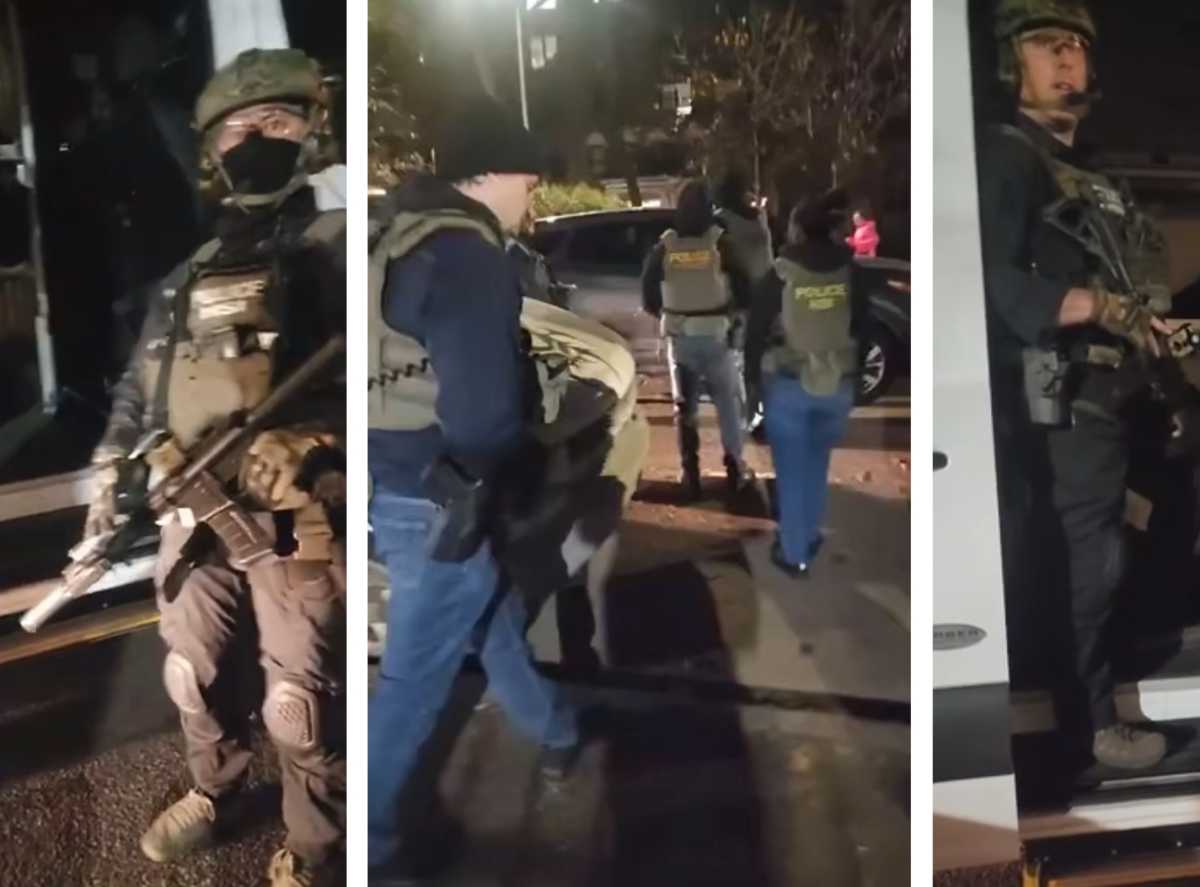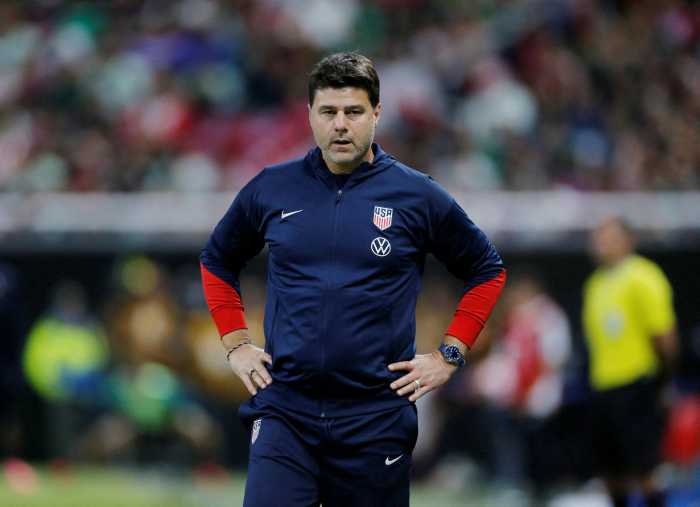No tummy aches came between the children of P.S. 20, the Bowne School in
Flushing, and their school’s playground a week after the school’s water supply became contaminated.
“I drank a little water and the water is pink,” said five-year-old Camila Zarama. “It tasted sweet.”
Zarama and scores of other children had to be removed from the school on Tuesday, June 1 for medical treatment when, a chemical used in anti-freeze and coolants, leaked from an air conditioner under repair on the roof of the school’s new wing.
Reports indicate that the elementary school’s drinking water had turned pinkish that afternoon, and authorities speculated that because the chemical is sweet-tasting, the children drank it.
Principal Victoria Hart called 9-1-1 around 1:30 p.m. because of the number of students who complained of tummy aches. Seventy-one children out of the 1,443 at the school were sent to area hospitals as a precaution, according to Fire Department spokesperson Jim Long. The pre-kindergartener’s grandmother, Marisela Quintero, said the girl spent the night in Flushing Hospital because she felt dizzy.
“I felt bad and after in the hospital,” said Zarama. “I vomited a little.”
According to parents, the children still cannot drink from the water fountains and the school’s not preparing any food with the building’s water. Instead, the children eat sandwiches prepared offsite and drink from gallons of water. The toilet water does work however.
“I don’t let them drink the water or eat the food,” said Elizabeth Reynoso, the mom of a seven-year-old at P.S. 20. “I always send them with food.”
Parents received a letter from the principal inviting them to attend a meeting at the school on Monday, June 7 “regarding the water supply issue” at P.S. 20. DOE spokesperson Marge Feinberg said school health officials, representatives from the Division of School facilities and environmental scientists answered parent’s questions.
“They talked about what had happened but couldn’t say much because it’s under investigation,” Feinberg said, adding that they want to make sure no chemical particles remain in the pipelines. “Attendance is back to normal.”
Propylene Glycol, a chemical used in anti-freeze and coolants, is the suspected cause. A colorless, syrupy liquid that is usually dyed red or green for industrial use, it is mildly toxic when ingested in large amounts, according to material safety data sheets.
In trace quantities, it is used to help dissolve medicines and “moisturize” lotions, cosmetics and tobacco products. First aid measures for ingestion are to give a conscious victim milk or water to dilute the chemical.
No tummy aches came between the children of P.S. 20, the
“I drank a little water and the water is pink,” said five-year-old Camila Zarama. “It tasted sweet.”
Zarama and scores of other children had to be removed from the school on Tuesday, June 1 for medical treatment when, a chemical used in anti-freeze and coolants, leaked from an air conditioner under repair on the roof of the school’s new wing.
Reports indicate that the elementary school’s drinking water had turned pinkish that afternoon, and authorities speculated that because the chemical is sweet-tasting, the children drank it.
Principal Victoria Hart called 9-1-1 around 1:30 p.m. because of the number of students who complained of tummy aches. Seventy-one children out of the 1,443 at the school were sent to area hospitals as a precaution, according to Fire Department spokesperson Jim Long. The pre-kindergartener’s grandmother, Marisela Quintero, said the girl spent the night in
“I felt bad and after in the hospital,” said Zarama. “I vomited a little.”
According to parents, the children still cannot drink from the water fountains and the school’s not preparing any food with the building’s water. Instead, the children eat sandwiches prepared offsite and drink from gallons of water. The toilet water does work however.
“I don’t let them drink the water or eat the food,” said Elizabeth Reynoso, the mom of a seven-year-old at P.S. 20. “I always send them with food.”
Parents received a letter from the principal inviting them to attend a meeting at the school on Monday, June 7 “regarding the water supply issue” at P.S. 20. DOE spokesperson Marge Feinberg said school health officials, representatives from the Division of School facilities and environmental scientists answered parent’s questions.
“They talked about what had happened but couldn’t say much because it’s under investigation,” Feinberg said, adding that they want to make sure no chemical particles remain in the pipelines. “Attendance is back to normal.”
Propylene Glycol, a chemical used in anti-freeze and coolants, is the suspected cause. A colorless, syrupy liquid that is usually dyed red or green for industrial use, it is mildly toxic when ingested in large amounts, according to material safety data sheets.
In trace quantities, it is used to help dissolve medicines and “moisturize” lotions, cosmetics and tobacco products. First aid measures for ingestion are to give a conscious victim milk or water to dilute the chemical.
– Additional reporting by






























